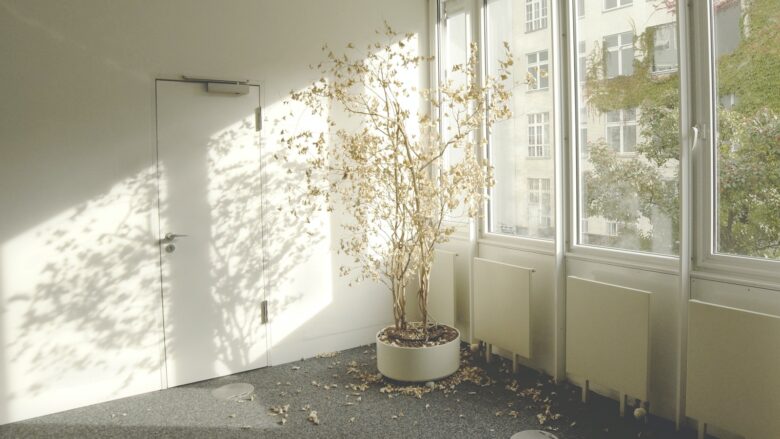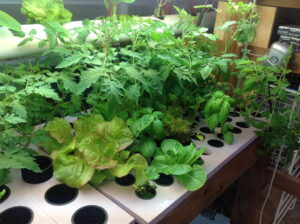Step into the world of indoor hydroponic gardening and unlock the secret to cultivating vibrant, nutrient-packed plants right in the comfort of your own home. Gone are the days of traditional soil-based gardening methods – it’s time to embrace the innovative charm of hydroponics. Imagine, a bustling oasis of green foliage thriving in a carefully controlled aquatic environment, with roots dipped delicately in nutrient-rich solutions. Sounds like something out of a futuristic utopia, right? Well, prepare to be amazed as we take you on an enlightening journey through the realm of DIY indoor hydroponic gardening. Get ready to satisfy your green thumb cravings and discover the comprehensive how-to that will unleash your inner horticultural genius.
Choosing the Right DIY Indoor Hydroponic System: Factors to Consider
When it comes to delving into the world of indoor hydroponic gardening, selecting the right DIY system is crucial. With an extensive array of options available, it can be overwhelming to determine which one will suit your needs best. However, fret not! We’re here to guide you through the process by highlighting the key factors you should consider before making a decision.
First and foremost, you need to evaluate the space you have available. Whether you have a small apartment or a spacious home, there’s a DIY hydroponic system that can fit right in. Consider the dimensions of the area you plan to allocate for your indoor garden, as well as factors such as lighting and ventilation. By doing so, you’ll be able to ensure that the system you choose can operate efficiently and effectively within the given space.
Secondly, think about the types of plants you want to grow in your DIY indoor hydroponic garden. Each plant has different requirements when it comes to nutrients, water, and light. Some plants may thrive in a deep-water culture system, while others may require a nutrient film technique system. Research the specific needs of the plants you’re interested in cultivating and select a system that can provide those requirements adequately. Ensuring that your chosen system aligns with the plants you want to grow is vital for the success and yield of your hydroponic garden.
Optimal Lighting for Indoor Hydroponic Gardens: Types and Recommendations
1. LED Grow Lights: These energy-efficient lights are a popular choice among hydroponic gardeners. They emit specific wavelengths of light that correspond to the needs of plants at different stages of growth. LED lights can provide a full spectrum of light, promoting photosynthesis effectively. Additionally, they produce less heat, reducing the risk of plant damage.
2. Fluorescent Lights: This affordable and widely available lighting option works well for small indoor hydroponic gardens. You can choose between compact fluorescent lights (CFLs) or high-output fluorescent lights (HOFLs). CFLs are great for providing ambient light to a garden, while HOFLs are better suited for larger setups or taller plants. These lights are low in heat emission and can be placed close to the plants without causing damage.
3. High-Intensity Discharge (HID) Lights: HID lights are known for their high light output and efficiency. They are available in two main types: metal halide (MH) and high-pressure sodium (HPS). MH lights are ideal for the vegetative stage, providing a bluish light that promotes leafy growth. HPS lights, on the other hand, emit a reddish-orange light, perfect for the flowering and fruiting stage. HID lights generate more heat and require proper ventilation and cooling to prevent overheating in your hydroponic garden.
Selecting the Best Nutrient Solution for Indoor Hydroponics: Understanding Formulations and Dosages
Indoor hydroponic gardening is a fascinating way to grow plants without traditional soil. With the right nutrient solution, your indoor garden can thrive and produce bountiful crops. In this post, we’ll dive into the world of selecting the best nutrient solution for your indoor hydroponics setup. Understanding the different formulations and dosages is crucial for the success of your plants.
First and foremost, it’s important to understand the various formulations available in the market. Nutrient solutions are typically divided into two categories: pre-formulated and custom-blended. Pre-formulated solutions come ready-to-use, with the perfect balance of essential nutrients for your plants. These are ideal for beginners or those who prefer convenience. On the other hand, custom-blended solutions allow you to fine-tune the nutrient ratios based on your plants’ specific needs. This option offers more flexibility but requires a deeper understanding of plant nutrition.
Dosage is another crucial aspect to consider when selecting your nutrient solution. The right dosage will depend on factors such as plant type, growth stage, and environmental conditions. It’s important to follow the manufacturer’s guidelines for dosing, adjusting as necessary based on your plant’s response. Over- or under-feeding your plants can lead to nutrient deficiencies or toxicities, which can hinder their growth and overall health. Keep track of your plants’ progress and make necessary adjustments to ensure optimal nutrient uptake.
To make your nutrient solution shopping process a little easier, here are a few tips:
– Start with a pre-formulated solution if you’re new to indoor hydroponics or prefer simplicity.
– If you opt for custom-blended solutions, research and understand the specific nutrient requirements of your plants.
– Consider the growth stage of your plants and adjust the dosage accordingly.
– Regularly monitor your plants’ health and adjust the nutrient solution as needed.
– Don’t be afraid to experiment and find what works best for your unique setup.
Remember, selecting the best nutrient solution for your indoor hydroponics setup is a journey of understanding and experimentation. By taking the time to learn about formulations, dosages, and your plants’ specific needs, you’ll be on your way to a thriving indoor garden. So, let’s embark on this exciting adventure and watch your hydroponic plants flourish like never before.
Essential Steps for Maintaining a Healthy Indoor Hydroponic Garden
In order to successfully maintain a thriving indoor hydroponic garden, there are a few essential steps that every aspiring indoor gardener should follow. These steps will ensure that your plants receive the necessary nutrients, light, and care they need to grow into vibrant and healthy specimens.
1. Choosing the right lighting: Lighting is crucial for the growth of your plants in an indoor hydroponic garden. Consider using LED grow lights, which provide the optimal spectrum of light for photosynthesis. Ensure that the lights are positioned at the appropriate distance from the plants to avoid burning or insufficient lighting.
2. Monitoring nutrient levels: One of the advantages of hydroponic gardening is the precise control over nutrient levels. Regularly check and adjust the nutrient solution to ensure that it contains the essential elements required for growth. Conduct pH testing to maintain a neutral or slightly acidic level, as this aids in optimal nutrient uptake by the plants.
3. Consistently checking water quality: Water plays a crucial role in hydroponic gardens, providing the medium for both nutrient delivery and root oxygenation. Test the water regularly for pH, conductivity, and oxygen levels to maintain optimal conditions for your plants’ health. Clean and disinfect the reservoir and growth containers to prevent the buildup of algae, bacteria, and pathogens.
By following these essential steps, you will be well on your way to maintaining a healthy indoor hydroponic garden. Remember to regularly inspect your plants for any signs of pests or disease, and adjust your growing environment accordingly. With proper care and attention, your indoor garden will flourish, providing you with a continuous supply of fresh and nutritious produce.
Advanced Techniques to Maximize Yields in DIY Indoor Hydroponics
In the fascinating world of DIY indoor hydroponic gardening, there exist advanced techniques that can take your yields to unimaginable heights. These methods, often perfected through trial and error, can significantly enhance the growth, quality, and abundance of your homegrown produce. Whether you’re a seasoned hydroponic enthusiast or just starting your journey, here are some extraordinary techniques to unlock the full potential of your indoor garden.
1. Light Optimization:
One of the key factors for maximizing yields in indoor hydroponics is providing plants with optimal lighting conditions. Here are some techniques to ensure your leafy friends are getting the light they crave:
- Adjustable Light Heights: Tailor the distance between your grow lights and your plants based on their growth stage. Lower the lights for seedlings and raise them as the plants grow taller.
- Light Spectrum Manipulation: Experiment with different types of grow lights that provide varying spectra, such as full spectrum or blue/red combinations, to cater to your plants’ specific needs during different growth phases.
- Light Intensity Control: Monitor and adjust the lumens your plants receive by using dimmers or a combination of high- and low-intensity lights. This allows you to imitate natural daylight and create optimal conditions for photosynthesis.
2. Nutrient Management:
Proper nutrient management is vital to ensure your plants receive the ideal balance of essential elements. Consider implementing these techniques to optimize nutrient uptake:
- Periodic Flushes: Regularly flush your hydroponic system with fresh, pH-balanced water to remove any excess salts or nutrient buildup that may hinder nutrient uptake.
- Customized Nutrient Formulas: Tailor nutrient solutions to match the specific needs of different plants, as their requirements can vary throughout their growth cycle. Adjust the nutrient strength and composition accordingly to maximize their growth potential.
- pH Monitoring: Regularly measure and adjust the pH level of your nutrient solution to ensure optimal nutrient availability. Most plants thrive in a slightly acidic range between 5.5 and 6.5 pH.
3. Environmental Control:
Creating the perfect growing environment plays a crucial role in maximizing yields. Here are some advanced techniques to optimize the environmental conditions of your DIY indoor hydroponic garden:
- Temperature Regulation: Maintain consistent temperatures within the desired range for your plants. Utilize heaters, air conditioners, fans, or cooling systems to provide optimal growing conditions throughout the year.
- Humidity Management: Control humidity levels to avoid excess moisture, which can lead to mold or fungal growth. Use dehumidifiers, humidifiers, or ventilation systems to maintain the ideal humidity range for your plants.
- CO2 Enrichment: Boosting carbon dioxide levels can supercharge photosynthesis and enhance plant growth. Introduce CO2 into your grow space using generators or systems designed for controlled CO2 supplementation.
In the ever-evolving world of gardening, hydroponics has revolutionized the way we cultivate plants. By embracing the creativity that lies within us, we can embark on a journey of DIY indoor hydroponic gardening that is both captivating and rewarding.
As we conclude this comprehensive how-to guide, we hope that you have been inspired to explore the endless possibilities that hydroponics offers, right from the comfort of your own home. By nurturing your plants in a controlled and water-efficient environment, you can unlock the full potential of your gardening ambitions, regardless of the space constraints or unpredictable weather conditions.
Remember, the key to successful indoor hydroponics lies in understanding the unique needs of each plant species, creating a conducive growing environment, and providing them with the optimal balance of essential nutrients. Whether you choose to grow luscious leafy greens, vibrant herbs, or even exotic flowers, the possibilities are limited only by your imagination.
With the right tools, a little bit of patience, and a dash of ingenuity, you can transform any corner of your living space into a thriving oasis of greenery. From setting up a basic system using simple materials to fine-tuning more complex setups, the momentum of your hydroponic adventure is entirely in your hands.
As you immerse yourself in the world of indoor hydroponics, you’ll soon discover the magic of observing your plants flourish without soil. Witnessing their roots bask in nutrient-rich water, their leaves unfurling with vibrancy, and their stems reaching for the sky will undoubtedly bring you immeasurable joy and a profound appreciation for Mother Nature’s resilience.
We hope this guide has equipped you with the knowledge and confidence to embark on your own DIY hydroponic gardening journey. Remember, gardening is a continuous learning process, so don’t be afraid to experiment, make mistakes, and adapt your techniques along the way.
So, roll up your sleeves, unleash your inner gardener, and let your indoor hydroponic garden be a testament to your passion and creativity. As you cultivate plants in this innovative way, may you find solace, fulfillment, and a deep connection with the natural world that surrounds you.
Now, go forth, fellow hydroponic enthusiasts, and may your indoor gardens bloom with splendor, captivating all who enter your green sanctuary. Happy growing!



